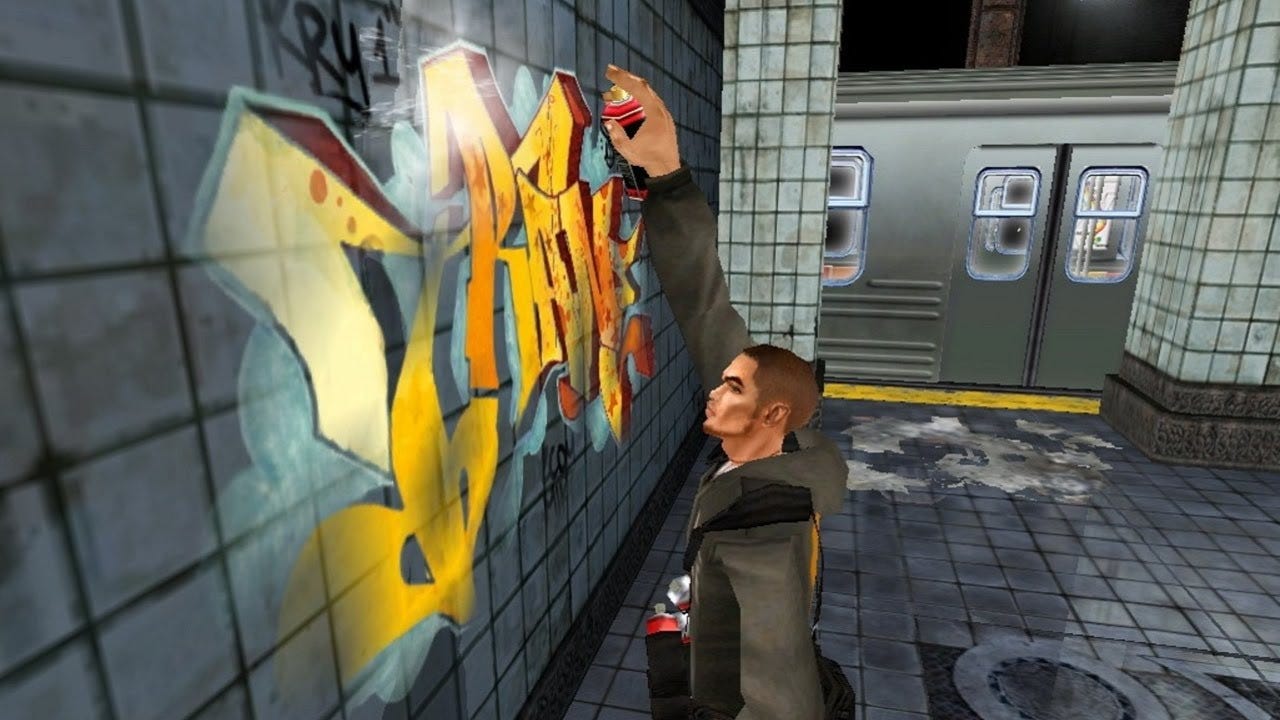Spray It Don't Say It
The evolution of graffiti in gaming.
While Jet Set Radio’s introduction of graffiti mechanics in video games ended up being overshadowed by its cel-shaded art style, it did coincide with an overall elevation of street art aesthetics into other mediums. Paul Budnitz founded Kidrobot in 2002, seeing a designer toy boom in Asia with artists like Michael Lau leading the charge. Partnering with artists like the late Frank Kozik, Huck Gee, and SEEN, it similarly saw graffiti get legitimized in a new way. Meanwhile, KAWS was making headway with his Japan-born line of apparel and collectible toys at OriginalFake which he founded in 2006, seeing the success of the urban vinyl movement spearheaded by people like Hikaru Iwanaga’s BOUNTY HUNTER.
All of those burgeoning subcultures had both a direct and indirect influence on the aesthetics of Jet Set Radio, but it was Marc Ecko who found a way to synthesize them for the American market. Ecko founded Complex magazine in 2002, itself inspired by Japanese magazines (specifically Hot Dog Press, which featured two covers and could be flipped to explore in-depth articles on one side, and a catalog of the month’s coolest items on the other). It tapped into a market where hip-hop, sneakers, streetwear, fashion, and street art were beginning to coalesce. And the next frontier of culture was slated to be video games, a medium that was growing up in unprecedented ways.

